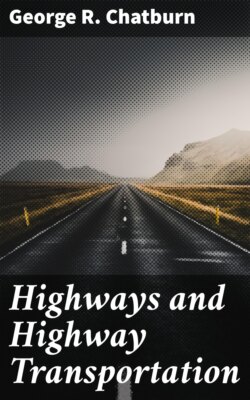Читать книгу Highways and Highway Transportation - George R. Chatburn - Страница 32
Lines of Travel.
Оглавление—To reach the Ohio Valley travelers might go by way of the north along the routes just mentioned to the Great Lakes, thence to the interior of Ohio, or they could leave the Mohawk and portage across to the upper waters of the Allegheny. The Indians gave trouble along these lines, so a more southerly route was often taken. Some of these, commencing on the north, were: Up the Susquehanna to its headwaters, portage to one or the other of tributaries which flow into the Allegheny near Kittanning; leave the Susquehanna and go up the Juniata and portage over to the Conemaugh, thence to the Allegheny—a course partly occupied now by the Pennsylvania railroad; or, by way of the Potomac, and Wills Creek, then across the Youghiogheny, and Monongahela. Several other trails crossed the Alleghanies. A trail through southern Pennsylvania called occasionally Nemacolin’s Path afterward formed the line of Braddock’s Road, hastily constructed for military purposes during the French and Indian War, and over which Braddock’s unfortunate expedition traveled. Still farther south there was a well-known trail often followed by the Cherokee Indians, by trappers, hunters, traders, and missionaries desirous of reaching the lands beyond the mountains. Skirting the north end of the Blue Ridge range the traveler followed up the Shenandoah to near the present town of Staunton, thence across the ridges to the headwaters of the James, thence to upper tributaries of the New River, then by crossing a few more ridges to the Holston River, thence into the bountiful hunting grounds of Tennessee. The Cherokee Indians were jealous of this territory and as far as possible kept it closed to the settler. Therefore the country beyond the Alleghanies was not well known to the Virginia colonists, even up to 1800. True, records of Dougherty, a trader, who had visited the Indian tribes in this region as early as 1690 were known, and another (Adair) in 1730, and still others after 1740. Glowing reports were brought back by the few traders, hunters, trappers, and occasional talkative Indians, who had visited those regions of magnificent rivers, vast woods, and extended prairies. The wild beasts with which this fertile country abounded were likened to the leaves on the trees, they were so abundant. Even the great Ohio River was but a tributary of a larger river of which they had no definite information. The trip, in the language of the Indian, from the headwaters of the Holston (Hogo higee) to the Wabash (Ohio) required for its performance “two paddles, two warriors, three moons.”[20] These glowing descriptions only whetted the adventurous appetite and soon such hardy pioneers as Daniel Boone and his comrades sought this territory where they could live near to nature and be freed from high taxes. There was also a well-worn trail from Philadelphia, east of the Cherokee (Shenandoah) through Virginia to the Yadkin, from which travelers could diverge at various points and reach the Cherokee trail or go on through Cumberland Gap farther to the west.
